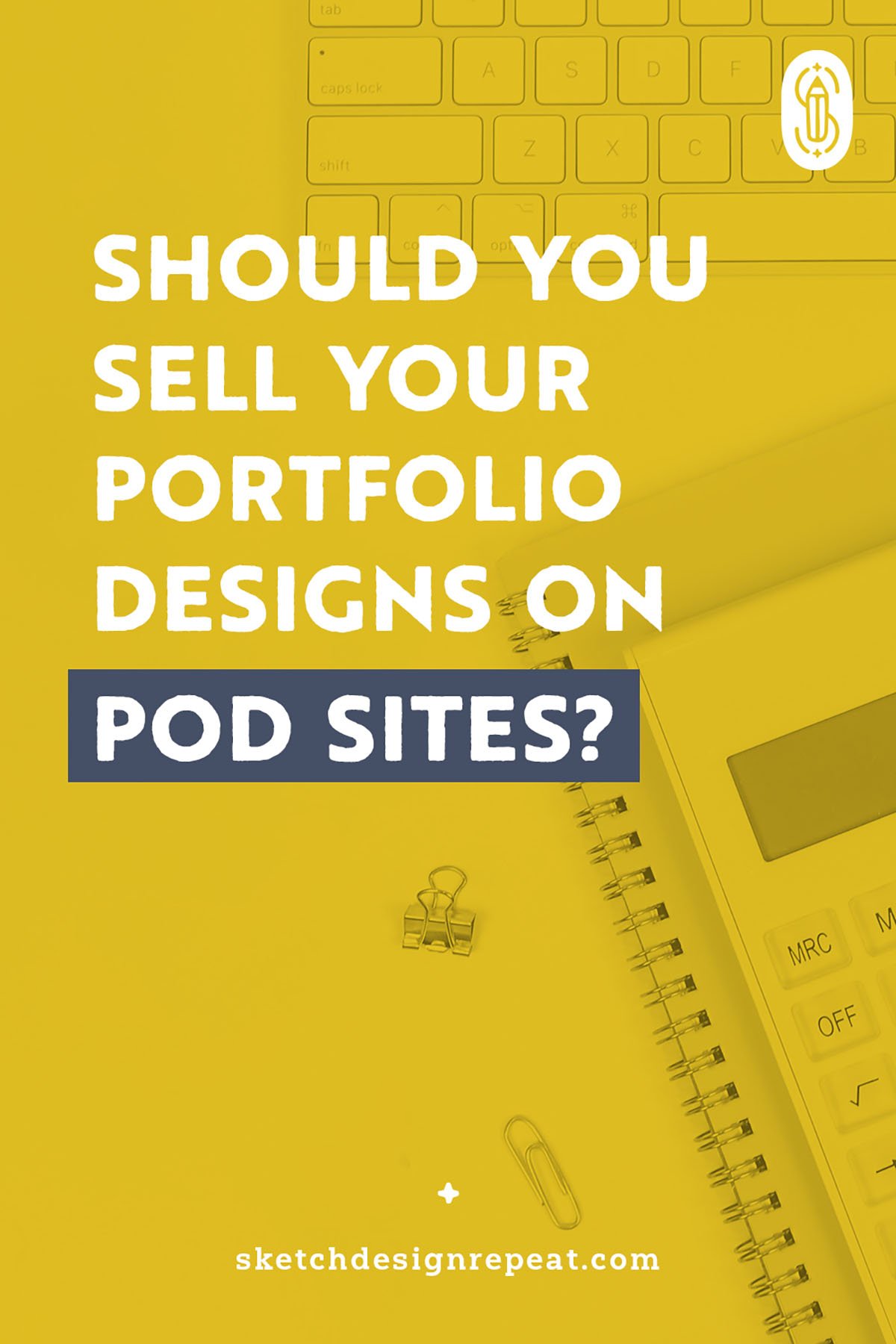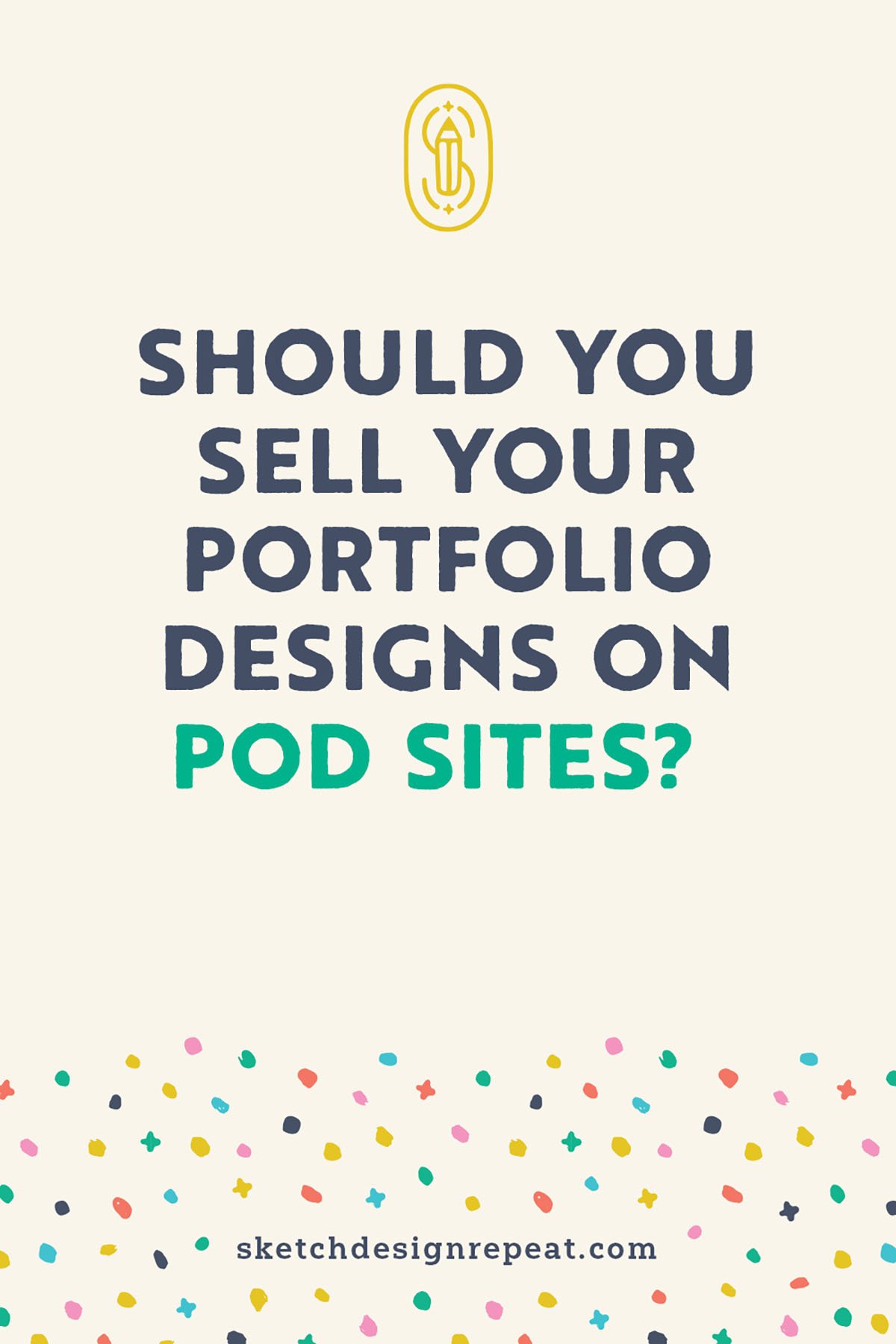When starting off as a freshly minted surface pattern designer, one of the first avenues most artists consider is uploading their artwork onto POD (print-on-demand) sites like Spoonflower or Society6.
And that makes a lot of sense when you compare it to the amount of effort versus licensing or selling your artwork to companies. Because with POD sites, the barrier to entry is low: you just have to create an account and upload your art. So you could conceivably start selling within a day, making a small commission off of each product you choose to include in your “store.”
But with licensing, it’s a much longer process. You first have to develop enough market-friendly art in your portfolio to have enough to offer to potential clients – although you need a LOT less art than you think!
Next, you’ll have to research companies to reach out to, find their contact information, and reach out to those brands. Then you’ll likely need to follow up regularly, often waiting for a response from the art director.
And when they finally show interest in your artwork, you’ll have to negotiate the pricing and terms of the deal. So it’s a LOT more work… but the potential income is also a LOT greater than the few dollars you’ll make when a mug or sticker sells on a POD site.
So it’s no surprise that many surface designers consider doing both POD sites and licensing their artwork because each option offers what the other one can’t – with licensing you could eventually get paid well for your art, but with POD you have the potential to make a little income right away.
But therein lies a problem. And so I’m not surprised that one of the most frequent questions I get from my students is:
Is it ok to upload designs from my portfolio onto print on demand sites or will that affect my ability to license those same designs to companies?
And from my experience, it really depends.
But I know that’s not enough of an answer, so let’s talk about the two factors that will likely affect how comfortable you’ll feel uploading your portfolio art onto a POD site.
Factor #1: The Print on Demand Site You Choose
There are dozens of different print on demand sites nowadays, but I’d say the most popular print on demand sites for surface pattern designers are:
-
Spoonflower
-
RedBubble
-
Society6
-
Zazzle
Between all of these, I’ve personally found Spoonflower to be the most advantageous POD site for surface designers who still want to license their artwork to companies. The main reason for that is they only specialize in 2 products – fabric and wallpaper – so it’s a lot more niche than the other 3 sites that sell dozens or hundreds of products in apparel, stationery, gifts, home decor, and more.
For example, say I was reaching out to a manufacturer who created primarily patterned-based notebooks, mugs, and tote bags. If I uploaded some portfolio patterns on Spoonflower, there’s no crossover in products with that company. But if I uploaded those same patterns on RedBubble and had mugs and notebooks for sale, that could potentially become an issue.
So when thinking about where you want to license your art, consider what products those companies create and choose a POD site where there’s minimal overlap. Or if you want to use one of the bigger POD sites to allow yourself more product options to promote, be strategic in the products you use (most sites have the option for you to toggle on/off which products you’d like each design on).
Factor #2: How Strict a Company’s Terms Are
While there are some companies that don’t care if you’re selling a design on a POD site, there’ll be some that do – it really comes down to the type of transaction and how strict the contract terms are for it.
In my experience, some (but not all) companies that want to purchase designs as a buyout, are more likely to have an issue if your design is being used elsewhere.
Sometimes that means they’ll ask you to remove the design from the POD site and confirm you won’t sell it in the future, but it’s also possible for the deal to completely fall through, especially if you’ve already sold products to customers with the art they want to purchase.
RELATED ARTICLE: 5 Reasons You Should Consider Selling Your Art Outright
On the other hand, companies are less likely to take issue with you selling on POD sites when licensing your art. That’s especially true if the products you’re selling are different from what they create. However, that doesn’t mean every company that licenses art will be ok with it.
And that’s really the challenge we have as surface designers: not knowing how each company will react to us selling our art on POD sites. So what should you do???
The advice I give to my students who want to license & have their art on POD sites is to consider separating their artwork into two categories:
-
Portfolio art you’ll submit to companies
-
Designs for POD sites
By dividing your artwork, you won’t run into any issues with the companies you approach. This approach will work best for prolific designers who can create several pieces of artwork on a weekly basis, but it’s still possible if you’re not fast (like I am). And if so, what I suggest is to save your more complicated, time-consuming designs for your portfolio and your simpler designs for POD sites.
Then spend at least a year developing both income sources, making sure to regularly market your art, because any new avenue of income is going to take a while to generate money.
Then after 12 months, you can reevaluate and decide whether or not you feel comfortable adding some portfolio work onto POD products (as you’ll hopefully have a few interactions with companies and be able to ask if that’s a deal-breaker for them or not).


Great article, thank you!
Thank you for this article! I have been wondering/worrying about this for months. My designs are fairly complex and I work a full time job so don’t have much time to create a lot of patterns.. I’ve been putting all my designs on POD sites for now, but with very few sales (it’s all very discouraging, lol). But after reading this I will try to start saving the complex designs for my portfolio and make easier, simpler designs for POD sites. Thanks again!
Thanks – I was just puzzling over this so I appreciate your article!